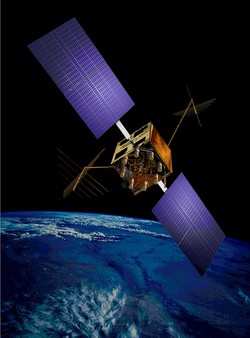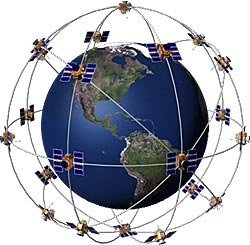Thu, Jul 07, 2011
GPS IIIB Satellites To Add Critical New Capabilities For Users
Around The Globe
A System Design Review (SDR) for the Global Positioning System
(GPS) IIIB satellite increment under the U.S. Air Force's next
generation GPS III program was successfully completed recently by
prime contractor Lockheed Martin. GPS III will improve position,
navigation and timing services and provide advanced anti-jam
capabilities yielding superior system security, accuracy and
reliability for users around the globe.

Lockheed Martin Space Systems of Newtown, PA, is under contract
to produce the first two of a planned eight GPS IIIA satellites,
with first launch projected for 2014. The contract, which features
a "back to basics" acquisition approach, includes a Capability
Insertion Program (CIP) designed to mature technologies and perform
rigorous systems engineering for future GPS III increments. An
important milestone that precedes the Preliminary Design Review,
the GPS IIIB SDR, established requirements for the capability
insertion planned for the follow-on GPS IIIB satellites and
validated the satellite design will meet the ever increasing demand
of more than one billion GPS users worldwide.
"This milestone comes at a pivotal time when the need to
affordably and predictably enhance the GPS constellation's
capabilities is at an all time high," said Lt. Col. Don Frew, the
U.S. Air Force's GPS III Program Manager. "Thanks to hard work from
the entire government and industry GPS III team, we have a solid,
low-risk path to introduce critical new capabilities to billions of
military, civil and commercial GPS users."
GPS IIIA will deliver signals three times more accurate than
current GPS spacecraft and provide three times more power for
military users, while also enhancing the spacecraft's design life
and adding a new civil signal designed to be interoperable with
international global navigation satellite systems. GPS IIIB will
provide higher power modernized signals, a fully digital navigation
payload capable of generating new navigation signals after launch
and a Distress Alerting Satellite System payload that relays
distress signals from emergency beacons back to search and rescue
operations.

Meanwhile, the company is progressing steadily on the GPS IIIA
program and is on schedule to deliver the first satellite for
launch in 2014. In August of 2010, the joint government and
industry team completed a highly successful critical design review,
which validated the detailed GPS IIIA design and allowed the
program to begin the transition to the production phase. The
program has now switched its focus from design to manufacturing and
has already completed 90 percent of the program's 59 manufacturing
readiness reviews.
More News
He Attempted To Restart The Engine Three Times. On The Third Restart Attempt, He Noticed That Flames Were Coming Out From The Right Wing Near The Fuel Cap Analysis: The pilot repor>[...]
Make Sure You NEVER Miss A New Story From Aero-News Network Do you ever feel like you never see posts from a certain person or page on Facebook or Instagram? Here’s how you c>[...]
From 2009 (YouTube Edition): Leading Air Show Performers Give Their Best Advice for Newcomers On December 6th through December 9th, the Paris Las Vegas Hotel hosted over 1,500 air >[...]
Aero Linx: NASA ASRS ASRS captures confidential reports, analyzes the resulting aviation safety data, and disseminates vital information to the aviation community. The ASRS is an i>[...]
“For our inaugural Pylon Racing Seminar in Roswell, we were thrilled to certify 60 pilots across our six closed-course pylon race classes. Not only did this year’s PRS >[...]
 NTSB Final Report: Rutan Long-EZ
NTSB Final Report: Rutan Long-EZ ANN FAQ: Turn On Post Notifications
ANN FAQ: Turn On Post Notifications Classic Aero-TV: ICAS Perspectives - Advice for New Air Show Performers
Classic Aero-TV: ICAS Perspectives - Advice for New Air Show Performers ANN's Daily Aero-Linx (06.28.25)
ANN's Daily Aero-Linx (06.28.25) Aero-News: Quote of the Day (06.28.25)
Aero-News: Quote of the Day (06.28.25)




